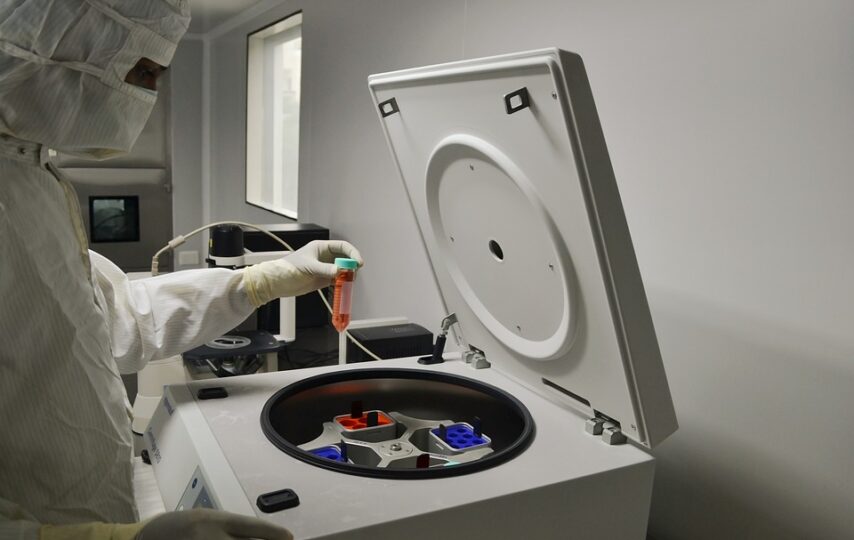Biotechnological developments have taken a massive boom in the previous 10 years in the clinical fields and agribusiness, climate, and energy areas. Practically these biotech advancements include hereditary designing, diagnostics, examination of various diseases, pondering the significance of manufactured science on current biotechnological improvements. Biotech innovations are successfully executed only when we have a reliable instrument. Equipment and technology are essential for biotech processes. Make sure that equipment is calibrated and is trustworthy. Biotechnology innovations have huge potential and unbelievable possibilities for human health and data research.
Here are the best five biotech innovations that are changing the business in 2021
1. Single-Cell Advancements
Single-cell advancements provide definite perspectives on cell conditions and are significant devices utilized in drug assessments and clinical examination. Along with cutting-edge sequencing, single-cell advances have uncovered a more reliable and accurate image of a cell group, particularly significant in understanding the tumor climate’s heterogeneity in cells. As these advances are primarily utilized in the explorations of cells and search on treatments, various research organizations on a contract base offer single-cell sequencing and examination stages with explicit DNA boards/panels from different parts of the world. Mission Bio offers their Tapestri Platform for analysts to profile details of every cell in a given cell populace using a two-venture microfluidic work process joined with single-cell sequencing. Celluar profiling for ‘specific disease can be accomplished by utilizing explicit DNA boards, for example, the intense lymphoblastic leukemia board. Single-cell examinations generally require different machines with independent mechanisms; however, Berkeley Lights has made a stride further by building up a solitary machine that can cycle and dissect cells individually at the same time.
The Beacon is fit for various single-cell controls in one optofluidic chip containing a huge number of small cell chambers. By utilizing light prompted dielectrophoresis, explicit cells are parcelled for additional investigation, for example, immune response collection screening as exhibited by the medication disclosure organization, Aldevron. The Lightning was likewise, as of late, dispatched to oblige T-cell detailed exploration.
Single-cell advancements help develop a huge dataset about body cells. This is helpful in the development of medicine, researches related to diseases.
2. BioPrinting
With added substance fabricating in BioTechnology, bioprinting companies offer a broad scope of materials and items. These new companies use bioprinters that work with bio-inks created from bio-based materials or biomaterials. For clinical applications, cells act as substrates and are developed around a framework. This empowers the improvement of bone, skin, or vascular unions from the patient’s own cells for customized medication. Different new businesses influence bioprinting for fast prototyping and the advancement of biopolymers.
3D Biotechnology Solutions is a Brazilian startup creating bioprinting arrangements. In the beginning, the startup has a bioprinter for 3D bio-fabrication, which serves the necessities of specialists dealing with tissue designing and regenerative medication. Firms offering this service additionally offer BioFDM, another printer that performs intertwined affidavit demonstrating (FDM) with biocompatible polymers. Some technologies in 3D bioprinting offer data on human tissues with high cell suitability. The startup consolidates cells with biomaterials to make a bio-ink which is then printed layer by layer. The fake 3D human tissue has a similar arrangement, usefulness, and design to genuine human tissue.
Bioprinting is a handy tool in organ and tissue engineering for building tissues and organ structures of the body. Bioprinting is a highly complex process, and the 3D printers and equipment involved in the process must be calibrated. Equipment calibration is essential in such complex processes for reliability and accurate results.
3. Current Cell Treatments
This is the biotech area where researchers are creating drug conveying cell treatments]. In type-1 diabetic patients, disabled pancreatic β-cells lead to insulin insufficiency and blood glucose development, bringing about manifestations like the frequent urge to pee, excessive thirst, and migraine. Sparaxis creates a potential arrangement: an implantable gadget made out of lab-developed pancreatic cells that straightforwardly react to a patient’s blood glucose levels. The device contains islet cells fabricated from actual pluripotent immature microorganisms (iPSCs) and is expected to eliminate medication for these patients. An organization presently creating one-time implantable medicines is Auckland-based Living Cell Technologies. Their NTCell treatment comprises an alginate-covered container containing neonatal choroid plexus cells embedded into the minds of Parkinson’s patients. Choroid plexus cells supply cerebrospinal liquid, mitogens, and different components that help neuronal development and capacity. In 2013, Living Cell Technologies supported the world’s first clinical preliminary for regenerative cell treatment for Parkinson’s sickness and were presently assessing NTCell for additional investigations.
4. Synthetic Biology
Here, biotech has remarkable potential. Pursuing and composing genomes permits BioTech new businesses and organizations to create items quicker than in recent times. Besides, engineered science offers expanded normalization and reproducibility, allowing controlling organic entities at the degree of quality organizations. New companies work on difficulties going from computational medication plans and cell agribusiness to microbiome-based arrangements. Bacterial cell industrial facilities give a high return of important biochemicals for pharma, materials, and food applications. Moving past organisms, new businesses are creating mammalian engineered science arrangements too.
German startup LenioBio creates plant-based, sans cell protein articulation arrangements. The startup’s ALICE pack produces more than 500 proteins with post-translational changes at a high return of 3 mg/ml. It essentially requires expanding quality in a plasmid to the lysate, taking out the requirement for numerous pipetting steps. Researchers are producing correspondent proteins, antigens, antibodies, allergens, and chemicals for use in BioTech and biopharma areas with this technology.
4. Undifferentiated Organism Applications
Since the mid-1980s, researchers have been considering the conditions and controlling the personality of undifferentiated cells separately. The capacity to create the ideal cell type by controlled separation end up being mechanically significant in zones, for example, drug improvement, regenerative medication, and the production of essential bio-materials. For instance, one Canadian-based organization, NovoHeart, built up an answer for analysts hoping to lead drug tests for heart sicknesses. Using this technology, the MyHeart stage uses iPSCs to create human cardiovascular tissue or organ models; for example, their human ventricular cardiovascular organoid chamber (or human heart-in-a-container) all the more intently emulates the real human heart climate than creature models regularly utilized during preclinical improvement. MyHeart is planned to anticipate, all the more precisely, the impacts of new medications before they head to clinical preliminaries. Many organizations are bringing immature microorganism innovation straightforwardly to the place of need. Platelet BioGenesis, a 2014 startup situated in Massachusetts, builds up an on-request, portable bioreactor for in-field cell treatment, for example, in military clinical posts. The bioreactor fabricates iPSC-inferred platelet-like cells that are, as of now, being created to treat blood-coagulating infections like insusceptible thrombocytopenia. The equipment that companies are using must have accurate calibration. Equipment calibration should be highly accurate as the biological processes are complex, and precision is a must.
Undifferentiated cell advancements are positively not restricted to clinical examination and medicines, and this is appeared by the number of organizations putting resources into refined meats and elective protein. Utilizing cell horticulture, organizations like Future Fields, Memphis Meats, and Super Meat create lab-developed chicken, hamburgers, duck, eggs, and milk.
Conclusion
These biotechnology innovations discussed here are just the crust of what actually beneath. This arena of technology has a lot of significance and many possibilities soon.










